 Tuesday, December 16, 2025COLSA professor studies 'the hidden life below our feet' in the soilSerita Frey, professor in the UNH Department of Natural Resources and the Environment, was selected as the winner of the 2025 Excellence in Research Award given out during the annual Faculty Excellence celebration this fall. Frey's work has been lauded by colleagues and students alike, with one nominator saying she "has fundamentally changed how we think about soil." Tvisha Martin, a postdoctoral...
Tuesday, December 16, 2025COLSA professor studies 'the hidden life below our feet' in the soilSerita Frey, professor in the UNH Department of Natural Resources and the Environment, was selected as the winner of the 2025 Excellence in Research Award given out during the annual Faculty Excellence celebration this fall. Frey's work has been lauded by colleagues and students alike, with one nominator saying she "has fundamentally changed how we think about soil." Tvisha Martin, a postdoctoral...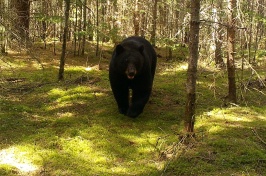 Friday, January 03, 2025New UNH research highlights the need for balanced research efforts to protect underrepresented species and guide future conservationMore than one million species at risk of extinction in the coming decades due to climate- and human-driven impacts on habitats. While thousands of research projects have studied the impacts of these risks and offer mitigation strategies, scientists with the New Hampshire Agricultural Experiment Station at the University of New Hampshire (UNH) found that in more than a century of U.S. mammal...
Friday, January 03, 2025New UNH research highlights the need for balanced research efforts to protect underrepresented species and guide future conservationMore than one million species at risk of extinction in the coming decades due to climate- and human-driven impacts on habitats. While thousands of research projects have studied the impacts of these risks and offer mitigation strategies, scientists with the New Hampshire Agricultural Experiment Station at the University of New Hampshire (UNH) found that in more than a century of U.S. mammal... Wednesday, November 20, 2024Drone technology offers promising potential for earlier disease identification in cornSeeing the last leaves hanging on to trees in late Fall is a telling sign that New England dairy farmers have wrapped up the year’s field crop operations and are starting to think about what seeds to purchase and plant next spring. For many, the Brown MidRib (BMR) corn variety is an enticing choice because it is highly digestible by dairy cows and can improve milk production. However, it is also...
Wednesday, November 20, 2024Drone technology offers promising potential for earlier disease identification in cornSeeing the last leaves hanging on to trees in late Fall is a telling sign that New England dairy farmers have wrapped up the year’s field crop operations and are starting to think about what seeds to purchase and plant next spring. For many, the Brown MidRib (BMR) corn variety is an enticing choice because it is highly digestible by dairy cows and can improve milk production. However, it is also...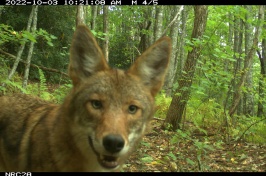 Tuesday, November 05, 2024Nationwide coyote surveys highlight how hunting by humans may increase, rather than reduce, local coyote numbersKey Finding Human hunting may unintentionally boost coyote populations by increasing reproduction and immigration rates, while competition with larger predators affects coyote numbers depending on habitat. Once a rare sight in the northeastern United States, the eastern coyote has become a common presence across New Hampshire’s forests, farms and suburbs. First arriving in the state in the...
Tuesday, November 05, 2024Nationwide coyote surveys highlight how hunting by humans may increase, rather than reduce, local coyote numbersKey Finding Human hunting may unintentionally boost coyote populations by increasing reproduction and immigration rates, while competition with larger predators affects coyote numbers depending on habitat. Once a rare sight in the northeastern United States, the eastern coyote has become a common presence across New Hampshire’s forests, farms and suburbs. First arriving in the state in the... Monday, August 12, 2024Highlighting the role of herbaria in documenting and preserving plant speciesIn 1901, several peculiar specimens of crabgrass were discovered on the rocky slopes of Rock Rimmon in Manchester, New Hampshire. Initially thought to belong to the species known as slender crabgrass (Digitaria filiformis), the slender, wiry plants with small, delicate spikelets were only known from this single location. But by 1931, they were last collected from the area, and the grass has not...
Monday, August 12, 2024Highlighting the role of herbaria in documenting and preserving plant speciesIn 1901, several peculiar specimens of crabgrass were discovered on the rocky slopes of Rock Rimmon in Manchester, New Hampshire. Initially thought to belong to the species known as slender crabgrass (Digitaria filiformis), the slender, wiry plants with small, delicate spikelets were only known from this single location. But by 1931, they were last collected from the area, and the grass has not... Friday, July 12, 2024Prestigious honor recognizes achievements and serviceStuart Grandy, professor of soil biogeochemistry and fertility and co-director of the UNH Center of Soil Biogeochemistry and Microbial Ecology (Soil BioME), was recently named a fellow of the Soil Science Society of America (SSSA). The annual awards, which are the highest recognition given by the SSSA, are presented for outstanding contributions to soil science through education, national and...
Friday, July 12, 2024Prestigious honor recognizes achievements and serviceStuart Grandy, professor of soil biogeochemistry and fertility and co-director of the UNH Center of Soil Biogeochemistry and Microbial Ecology (Soil BioME), was recently named a fellow of the Soil Science Society of America (SSSA). The annual awards, which are the highest recognition given by the SSSA, are presented for outstanding contributions to soil science through education, national and...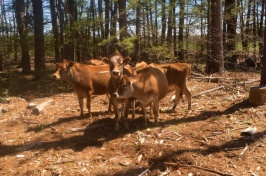 Monday, July 08, 2024$10M USDA grant advances climate-smart agricultureHow can New England, one of the nation’s most forested regions, produce more local, sustainable food while maintaining those forests’ many benefits? That’s the question UNH researchers aim to answer with a new project that studies integrating crop and animal farming in forested areas for enhanced food production, carbon sequestration and climate resilience. The five-year project, called Promoting...
Monday, July 08, 2024$10M USDA grant advances climate-smart agricultureHow can New England, one of the nation’s most forested regions, produce more local, sustainable food while maintaining those forests’ many benefits? That’s the question UNH researchers aim to answer with a new project that studies integrating crop and animal farming in forested areas for enhanced food production, carbon sequestration and climate resilience. The five-year project, called Promoting... Wednesday, June 26, 2024Project to Explore Crop Row Orientation and Cover Cropping StrategiesThe USDA has announced $5.5 million in grant funding through the Agriculture and Food Research Initiative (AFRI) to support innovative agricultural production systems research, including a project by University of New Hampshire researchers who will investigate ways to adapt cropping systems for increasingly variable weather. The UNH project, led by Rich Smith, a professor in the department of...
Wednesday, June 26, 2024Project to Explore Crop Row Orientation and Cover Cropping StrategiesThe USDA has announced $5.5 million in grant funding through the Agriculture and Food Research Initiative (AFRI) to support innovative agricultural production systems research, including a project by University of New Hampshire researchers who will investigate ways to adapt cropping systems for increasingly variable weather. The UNH project, led by Rich Smith, a professor in the department of...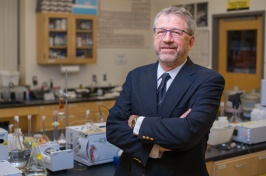 Tuesday, May 07, 2024UNH’s William McDowell Named a Fellow of the Society for Freshwater ScienceUNH Professor Emeritus of Environmental Science William H. McDowell was recently named a 2024 Fellow of the international Society for Freshwater Science (SFS) for his research contributions to aquatic science. McDowell, whose teaching and research career spans more than four decades, serves as the director of the New Hampshire Water Resources Research Center. His research examines the impacts of...
Tuesday, May 07, 2024UNH’s William McDowell Named a Fellow of the Society for Freshwater ScienceUNH Professor Emeritus of Environmental Science William H. McDowell was recently named a 2024 Fellow of the international Society for Freshwater Science (SFS) for his research contributions to aquatic science. McDowell, whose teaching and research career spans more than four decades, serves as the director of the New Hampshire Water Resources Research Center. His research examines the impacts of...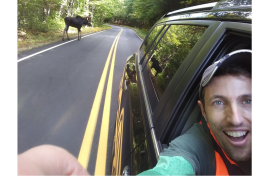 Monday, March 18, 2024Hired at the height of COVID, the assistant professor of wildlife ecology and management talks about his background, influences and one thing few people know about himLife might have been very different for Remington (Rem) Moll, assistant professor in the department of natural resources and the environment, if a leg injury suffered in his junior year of college hadn’t derailed his plans to become a professional athlete. But fortunately, Moll — who, along with his brother, was one of the first two people in his family to complete college — had already begun to...
Monday, March 18, 2024Hired at the height of COVID, the assistant professor of wildlife ecology and management talks about his background, influences and one thing few people know about himLife might have been very different for Remington (Rem) Moll, assistant professor in the department of natural resources and the environment, if a leg injury suffered in his junior year of college hadn’t derailed his plans to become a professional athlete. But fortunately, Moll — who, along with his brother, was one of the first two people in his family to complete college — had already begun to...
Natural Resources & Earth Systems Science Ph.D.